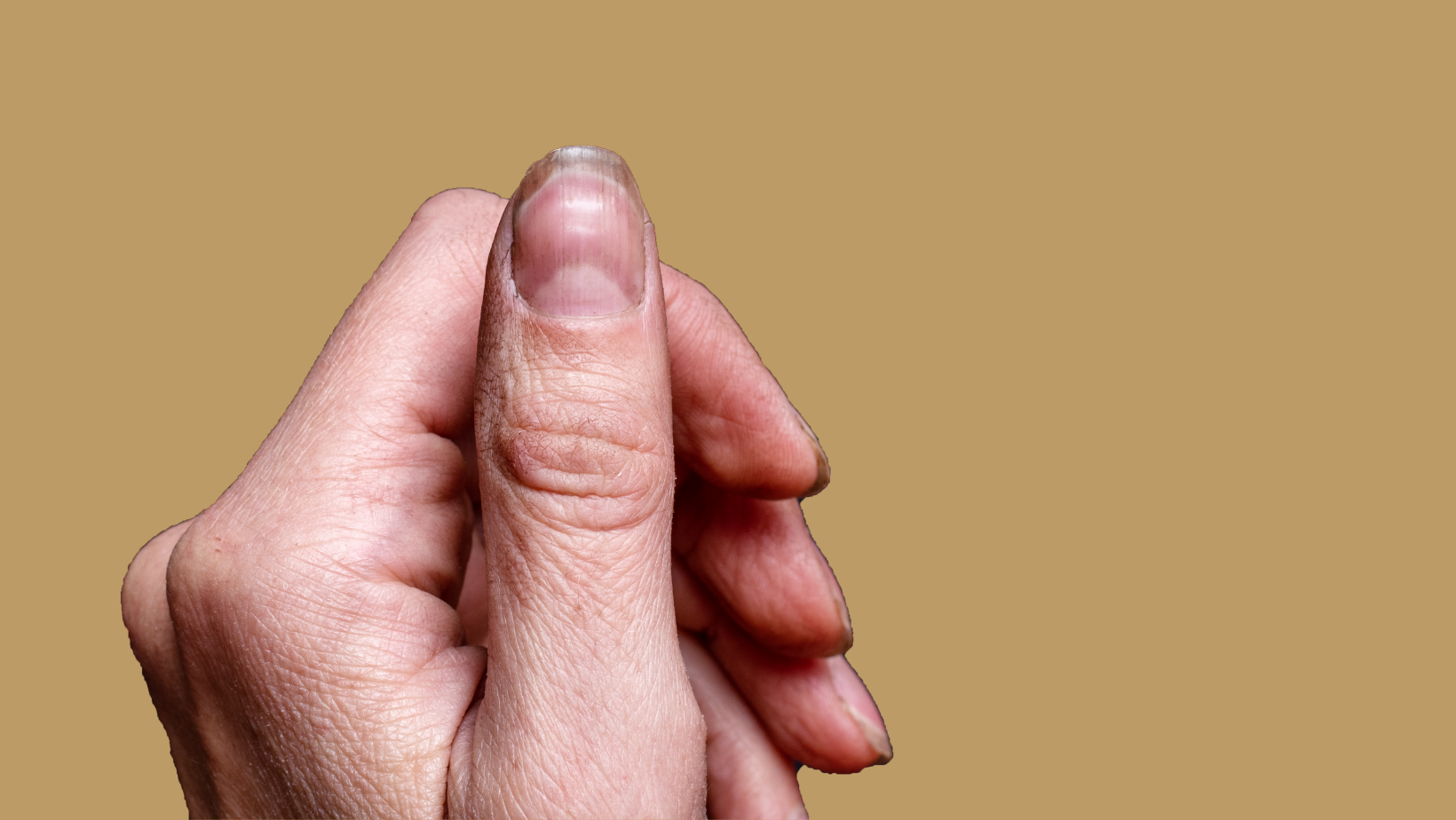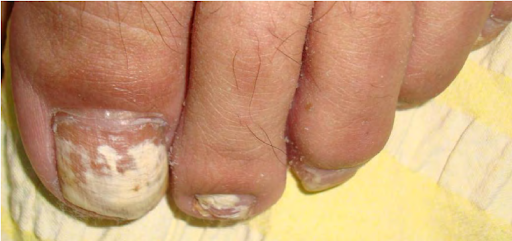- Home
- Health Center
- Health Info
- Dark & Cracked Nails? It Could Be Fungus!
Infections
Dark & Cracked Nails? It Could Be Fungus!


Have you ever noticed your nails looking dark and with cracks? It could be a fungal nail infection!
Fungal nail infections (also known as Onychomycosis) are one of the most common infections of the fingernails or toenails. The common features are nails which are discolored, thick and brittle. Fungi tend to infect cracked nails especially at the toes – under moist conditions which favours fungi growth.
How To Identify a Fungal Nail Infection?
To further understand how a fungal nail infection looks like, let’s first go through a simple anatomy of our nails.

Image 1. A healthy human fingernail
The two most common types are Distal & Lateral Subungual Onychomycosis (DLSO) which occurs in 90% of nail infections and another 10% of Superficial White Onychomycosis (SWO).
Distal & Lateral Subungual Onychomycosis (DLSO)
- More common on toenails.
- Involves the distal edge or lateral nail groove and may spread over the entire nail plate.
- Visible yellow, brown or white discoloration
- Nail plate appears opaque and thickened.
- Distal edge may break away.

Image 2. Sample image of Distal & Lateral Subungual Onychomycosis (DLSO) on the toes.
Superficial White Onychomycosis (SWO)
- Involves the surface of the nail plate and may spread deeper into the nail plate if left untreated.
- Nail remains attached to the nail bed but is soft & brittle with a visible white-colored rough surface.

Image 3. Sample Image of Superficial White Onychomycosis (SWO) on the toes
Complications of Fungal Nail Infections
If left untreated a fungal nail infection may progress to more severe symptoms e.g. feeling pain, discomfort, swelling and separation of the nail plate from its bed.
Who Is More At Risk Of a Fungal Nail Infection?
Anyone is likely to get a fungal nail infection. However, some people would have higher risk if they have the following conditions:
- Family history
- Aging population
- A nail injury or surgery
- Diabetes
- Poor immune system eg. HIV patients
- Blood circulation problems
- Athlete’s foot (ringworm on the feet)
- Warm, humid environment eg. During fitness activities, communal bathrooms
- Occlusive footwear
Treating Fungal Nail Infection
Fungal nail infections are stubborn and seldom resolve without treatment. Even with treatment it might take up to 3 months for your nails to recover. Therefore, being consistent with the treatment application is crucial in eradicating the fungal nail infection
A pharmacist may prescribe a topical antifungal application for mild fungal nail infections:
- Candazole lotion 1% – Apply to affected nails 2-3 times a day
- Amorolfine 5% lacquer – Paint on affected nails 1-2 times a weeks
If there’s no improvement after 3-6 months, it is advisable to consult a doctor. A doctor may prescribe you an oral antifungal.
How to Care for Your Nails?
Fungus grows in places which are warm and moist. Therefore, in order to stop them from infecting your nails, you should:
- Keep hands & feet clean and dry
- Keep fingernails & toenails short and clean
- Avoid barefooting around public showers or at the pool.
- Good management of health conditions (if any)
- Continue treatment until the nail has cured and newly grown
- Do not share towels, shoes or nail clippers
Bottomline: Pharmacists Can Treat Fungal Nail Infections
If you feel your nails look different, you can always approach your friendly pharmacists at your nearest Caring Pharmacy. We can assess your symptoms and help you determine if you have a fungal nail infection. Rest assured, treatments for fungal nail infections are easily available, safe to use and inexpensive.
References:
- Fungal Diseases: Fungal Nail Infections. Centers for Disease Control and Prevention (CDC). (Web Accessed October 2021) Web link: https://www.cdc.gov/fungal/nail-infections.html
- Dermatology: Onychomycosis. Medscape. (Web Accessed October 2021) Web link: https://emedicine.medscape.com/article/1105828-overview#a1
- Infectious Disease: Tinea Unguium. MIMS Malaysia (Web Accessed October 2021) Web link: https://specialty.mims.com/tinea%20unguium/signs%20and%20symptoms?channel=infectious-diseases
- Fungal Nail Infection. National Health Service UK. (Web Accessed October 2021) Web link: https://www.nhs.uk/conditions/fungal-nail-infection/
- Amorolfine: Indications and Dosage. MIMS Malaysia. (Web Accessed October 2021) Web link: https://www.mims.com/hongkong/drug/info/amorolfine?mtype=generic
- Clotrimazole: Indications and Dosage. MIMS Malaysia. (Web Accessed October 2021) Web link: https://www.mims.com/malaysia/drug/info/clotrimazole?mtype=generic
Tags
Latest Health Info
Healthy Weight, Happy Joints
How Does Weight Affect Knee Health? The Link Between Pounds And Pain Osteoarthritis (OA) involves the degeneration of joints, which ...
The Gut Warriors: Prebiotics, Probiotics and Postbiotics
When it comes to gut health, you’ve probably heard of prebiotics and probiotics. But did you know there’s also ...
Tip Moreh: Masa Berbuka Puasa
Moreh adalah tradisi unik yang biasanya diadakan selepas solat tarawih pada bulan Ramadan. Ia melibatkan penyediaan dan perkongsian makanan ringan ...



